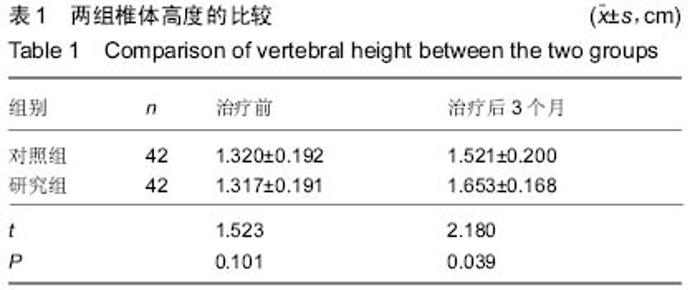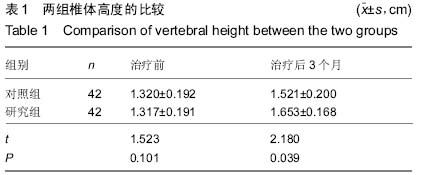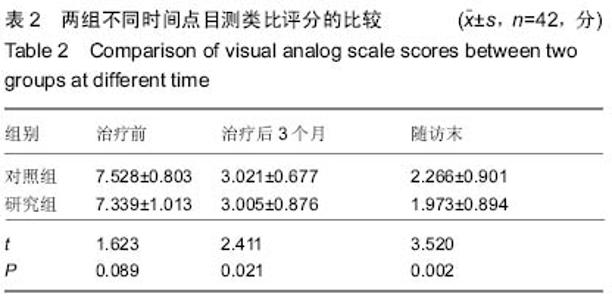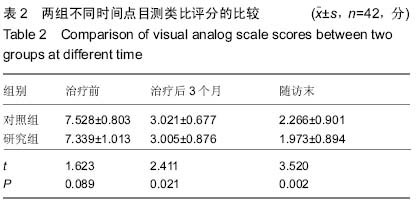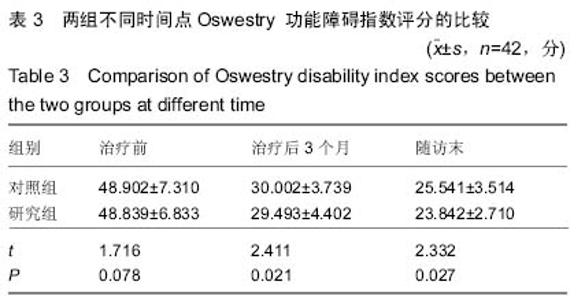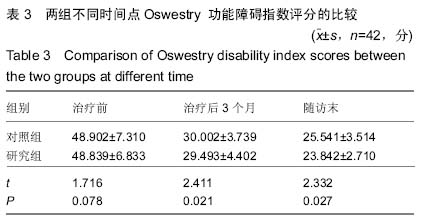| [1] 谢炜星,晋大祥,张顺聪,等.经皮椎体强化术治疗中上胸椎骨质疏松性压缩骨折疗效分析[J].国际骨科学杂志,2013,34(2): 132-134.
[2] Tseng YY,Yang TC,Tu PH,et al.Repeated and multiple new vertebral compression fractures after percutaneous transpedicular vertebroplasty.Spine (Phila Pa 1976).2009; 34(18):1917-1922.
[3] 王强,申剑,纪泉,等.老年椎体压缩性骨折患者强化椎体强化治疗的疗效和并发症探讨[J].中华老年医学杂志,2014,33(7): 768-771.
[4] 朱洲,王生介,厉晓龙,等.聚甲基丙烯酸甲酯骨水泥椎体成形与保守治疗胸腰椎体新鲜骨质疏松性压缩骨折的比较[J].中国组织工程研究,2014,39(18):6271-6275.
[5] 杨志东,余坤源,江小兵,等.椎体强化术治疗不同疼痛类型的骨质疏松性椎体压缩骨折的进展[J].中华临床医师杂志,2013,13(7): 6026-6027.
[6] 杨丰建,林伟龙,朱炯,等.经皮椎体成形术和经皮后凸成形术治疗骨质疏松性椎体压缩骨折[J]. 中国脊柱脊髓杂志,2010,21(3): 50-54.
[7] 高化,李锦军,王炳强,等.磁共振成像与核素骨显像对骨质疏松行椎体骨折诊断的比较[J].中国脊柱脊髓杂志,2010,21(7): 675-678.
[8] 杨岱青.骨水泥强化椎弓钉内固定伤椎椎体成形术治疗骨质疏松症椎体骨折效果观察[J]. 现代中西医结合杂志,2013,22(4): 393-394.
[9] 晋大祥,谢炜星,梁德,等.经皮椎体强化术后心法椎体压缩骨折的发生率及相关危险因素分析[J].中国脊柱脊髓杂志,2011,21(4): 308-311.
[10] 余建平,宋洁富,梁庆元,等.经皮椎体强化术治疗骨质疏松性椎体跳跃式压缩骨折[J].中国药物与临床,2011,11(10):1216-1217.
[11] 董智勇,霍明昌,范学辉,等.椎体强化弓根螺钉固定治疗骨质疏松性椎体爆裂骨折[J].中国临床医师杂志,2011,22(5):6741-6743.
[12] 王建平,蔡林.球囊扩张椎体后凸成形术对骨质疏松性椎体压缩性骨折患者疼痛及日常生活活动能力的影响[J].中华物理医学与康复杂志,2006,28(12):826-828.
[13] 刘瑶瑶,孙东,罗飞,等.新型可注射骨水泥椎弓根螺钉的设计及生物力学研究[J].中国创伤杂志,2012,28(2):744-747.
[14] Ma R,Chow R,Shen FH.Kummell′s disease: delayed post-traumatic osteonecrosis of the vertebral body.Eur Spine J.2010;19(7):1065-1070.
[15] Papanastassiou ID,Phillips FM,Van Meirhaeghe J,et al. Comparing effects of kyphnplasty, vertebroplasty, anti nonsurgical management in a systenmtic review of randomized and non-randomized controlled studies.Eur Spine J.2012;21(4):1826-1843.
[16] 赵伟华,徐又佳.球囊扩张椎体后凸成形术治疗骨质疏松性椎体骨折[J].实用临床医药杂志,2012,16(3):99-100.
[17] 王骅,静成,王永祥.自体骨椎体成形术的生物力学研究[J].实用医药杂志, 2013,17(1):1-4.
[18] 郁忠杰,翁益平,张云坤.过伸复位联合椎体成形术治疗骨质疏松性椎体压缩骨折的疗效评价[J].实用临床医药杂志,2013,19(17): 24-26.
[19] 赵雪寨.两种脊柱成形术治疗老年骨质疏松所致椎体压缩性骨折的疗效比较[J].实用临床医药杂志,2014,18(7):68-70.
[20] 陈柏龄,谢登辉,黎艺强,等.单侧PKP骨水泥注射过中线分布对压缩性骨折椎体两侧刚度的影响[J].中国脊柱脊髓杂志,2011, 21(2):118-121.
[21] 冯新民,王静成,张亮,等.高粘度骨水泥在修复骨质疏松性胸腰椎骨折中的应用[J].中国组织工程研究,2014,18(30):4757-4763.
[22] 魏玉峰,刘志杰.经皮椎体成形术治疗骨质疏松性椎体骨折的疗效及并发症[J].中国老年学杂志,2013,33(16):4056-4057.
[23] 王强,申剑,纪泉,等.老年椎体压缩性骨折患者强化椎体强化治疗的疗效和并发症探讨[J]. 中华老年医学杂志,2014,33(7): 768-771.
[24] 柴仪,刘法敬,申勇.经皮椎体后凸成形术治疗高领骨质疏松性椎体压缩骨折[J].中国老年学杂志,2013,33(9):4574-4575.
[25] 申勇,刘法敬,张英泽,等.单、双侧经皮椎体晤凸成形术治疗骨质疏松性椎体压缩骨折的疗效[J].中国脊柱脊髓杂志,2011,21(3): 202-206.
[26] 徐建成,白靖平,锡林宝勒日,等.注入骨水泥椎体成形与非手术治疗骨质疏松性椎体压缩骨折的Meta分析[J].中国组织工程研究与临床康复,2011,15(13):2366-2370.
[27] 唐骅,刘培来,李明.经皮椎体成形术治疗椎体压缩性骨折56例疗效观察[J].山东医药,2011,51(3):61-62.
[28] 杨岱青.骨水泥强化椎弓钉内固定伤椎椎体成形术治疗骨质疏松症椎体骨折效果观察[J]. 现代中西医结合杂志,2013,22(4): 393-394.
[29] 胡丽叶,朱旅云,李晓玲,等.原发性骨质疏松569例发病的相关因素[J].中国老年学杂志, 2010,29(10):829-831.
[30] 王尔天, 易伟宏,黄曹,等. PVP与PKP治疗骨质疏松性压缩骨折时骨水泥填充效果及弥散方式的比较研究[J].中国伤残医学, 2010,18(5):2-4. |
